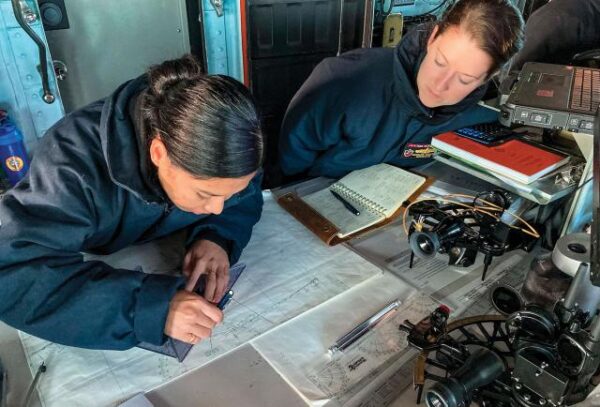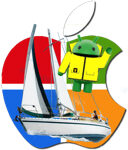In the age of AI, dual-band GNSS and inertial units, the U. S. Navy returns to good old fundamentals by encouraging its sailors to practice celestial navigation. To prevent jamming, spoofing, or even a hypothetical total electronic blackout, US Navy commanding officers and navigators must master the dead reckoning and handling of the sextant. Excerpt from an article from U.S. Naval Institute freely translated and adapted (¹).
In February 2022, The USS Essex sailed from Hawaii to California using only celestial navigation methods. This is what the watch crew learned and why all ships should make similar voyages. A few miles off the coast of Oahu, in Hawaii, all electronic navigation systems on the deck of the USS Essex have gone black. The bridge crew was forced to begin navigating by celestial plots drawn on paper charts. Five days or more 1.800 nautical miles later, the Essex arrived off the coast of San Diego, in California, on time and on the right route.
It was not a breakdown. With the approval of the Commanding Officer of the Essex, Captain Kelly Fletcher, her navigator Commander Stanton, and the main navigation instructor, Essex tested her own ability to sail with a total loss of electronic navigation equipment. Any navigation equipment that used electricity was prohibited, including all GPS sources, the electronic Voyage Management System (VMS) of Essex and STELLA celestial navigation software.

The co-author, right, and one of her quartermasters aboard the USS Essex chart a course in the ship's pilothouse. To ensure that watch officers on deck can maintain a precise and continuous plot on paper, Lieutenant Commander Stanton required tracing exercises during both transoceanic crossings (from San Diego to Guam, then from Japan to Oahu). Picture US Navy (Walter O’Donnell)
Celestial navigation skills were still necessary just a generation ago.. The practice has declined with the advent of more sophisticated and precise electronic navigation solutions. Yet, as the cyber and electronic warfare capabilities of America's adversaries have advanced, analog navigation techniques have become relevant again. However, it is still rare for a Navy warship to intentionally operate without its electronic navigation suite. As indicated by’American Practical Navigator :
“No navigator should ever become completely dependent on electronic methods. The navigator who regularly navigates by blindly pressing buttons and reading coordinates from “black boxes” will not be prepared to use basic principles to improvise solutions in an emergency. ”
Lessons to be learned
The authors of the article develop in detail the constraints and difficulties encountered in this long-term exercise..
“Advanced, hand-calculated celestial navigation is a full-time job. We both had to be on (or near) the bridge for approximately 18 hours per day, especially during morning and evening star sightings. Determining the point by hand took approximately three to four hours per day. Navigators who aspire to take a similar voyage can use STELLA to avoid cumbersome manual calculations. ”
For my own, I had already expressed my views on this subject in this blog more than fifteen years ago, concerning us as recreational boaters. (²). And even if it didn't often help me, I endeavored to occasionally maintain the practice of astro navigation used in the past, my sextant always remains on board.
And the authors conclude :
“Whenever possible, navigators and quartermasters must practice navigation skills learned in the classroom at sea and lead by example. Use the sextant at least once a day. Master the Sunlines first, then planets, stars and finally the moon. Earn the commanding officer’s and executive officer’s trust before asking them to embark on a celestial navigation voyage. ”
–––
(¹) Ships Must Practice Celestial Navigation (Quoted by Geogarage Blog.)
(²) About alignments and sextant
–––


The French Navy made similar statements as early as 2023 it seems to me – particularly as part of blackout exercises on the CDG. An order for around fifteen sextants from Patrick Lhoro was also followed in 2024, to equip all its major buildings!